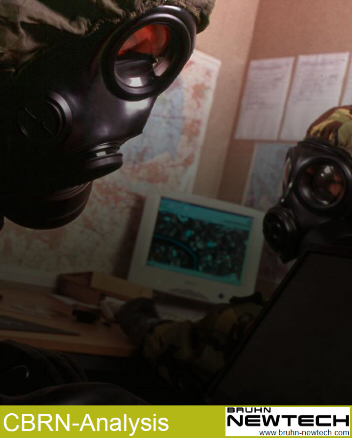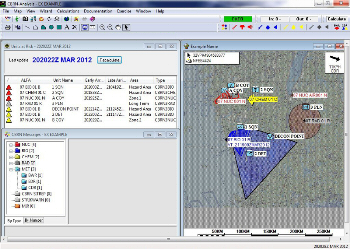CBRN-Analysis is a commercial-off-the-shelf (COTS) CBRN risk-management software solution. It is designed to provide military commanders with rapid and accurate information to increase their understanding of the CBRN situation from high to low intensity conflicts.
Key Features:
- ATP-45(D) and AEP-45(C) calculations based on observations and sensor results.
- CBRN-Analysis calculates the NATO approved Hazard Areas and Contaminated Areas
- Full Situational Awareness of CBRN Picture
- Map based display of CBRN information and overview of assets at risk.
- Optional interface to dispersion models providing detailed hazard estimates.
- Support for HPAC/JEM and HAPPIE models for COI
- Modules for allowing CBRN Information Management including Sensor Integration, Computerised Assisted Training, Language conversion and Decision Support
Operational Management
The software automatically calculates the CBRN predicated area and can quickly display that information on a map to the operator. The same data is used to identify key interest areas and units at risk.
NATO Compliance
CBRN-Analysis complies with the latest NATO standards. These include NATO STANAG 2103 ATP-45(D) and STANAG 2497 AEP-45 (C). CBRN-Analysis is continuously updated to conform to these rapidly changing standards. The software’s compliance to the NATO standard is independently verified to ensure it meets the correct level of performance.
Lower total life cycle cost
Support, Maintenance and Upgrade Agreements (SUMA) are available for CBRN-Analysis Standard. The SUMA guarantees inclusion of future ATP-45/AEP-45 updates. This achieves continued future compliance at a known cost.
Reduced procurement risk
CBRN-Analysis can be fully interfaced and integrated across platforms, command control systems, and communication infrastructures. Integrated versions are available off the shelf for C2PC or as a Web Service (Service Oriented Architecture). Low risk sensor integration is also available.
Situational awareness
CBRN-Analysis is designed to provide commanders with rapid and accurate information to help increase their situational awareness of the battlefield and enable informed decisions for saving lives, protecting assets and maintaining efficient operations.





